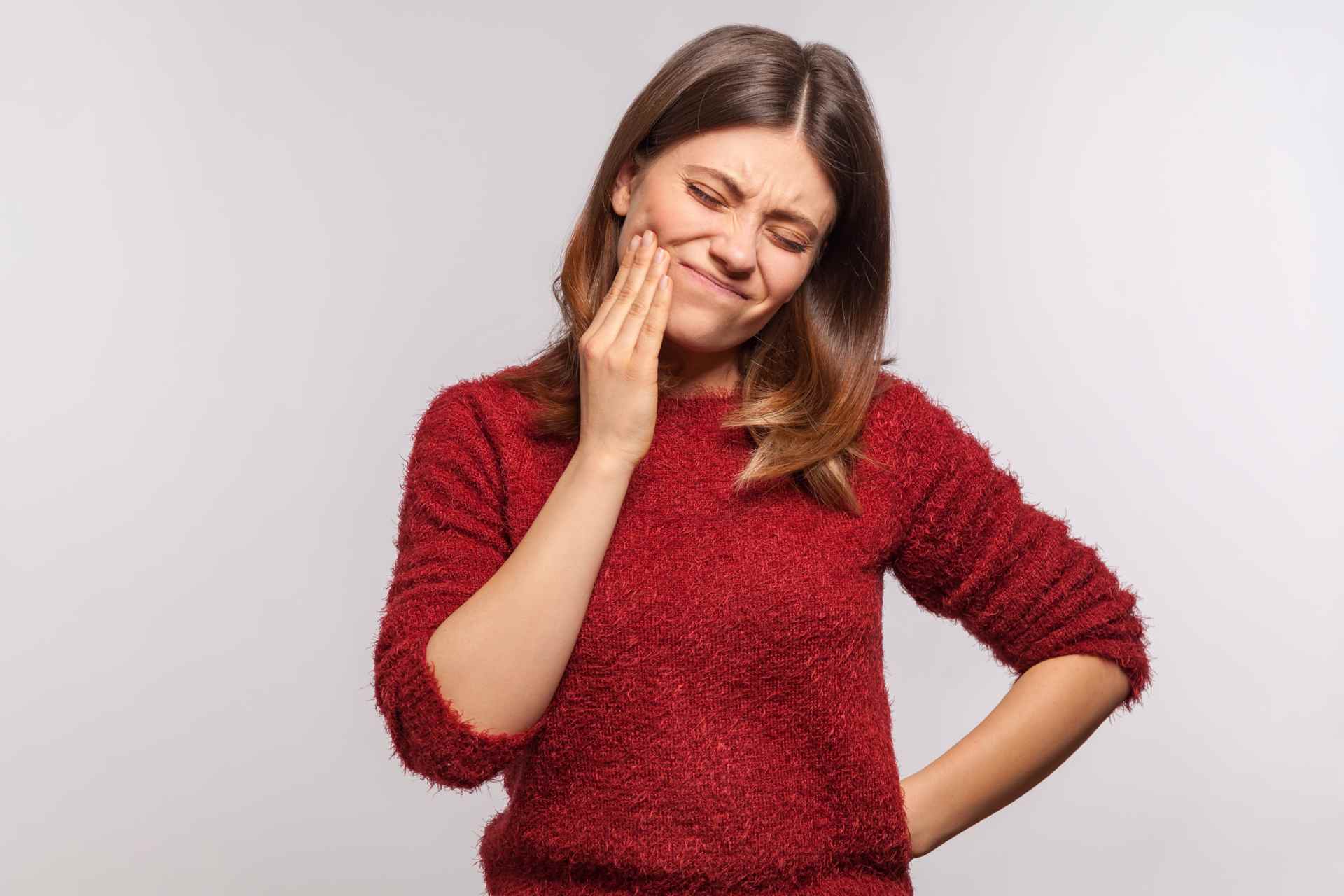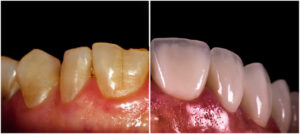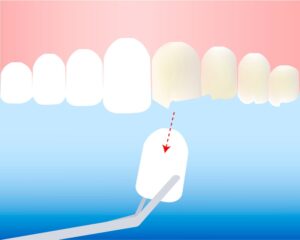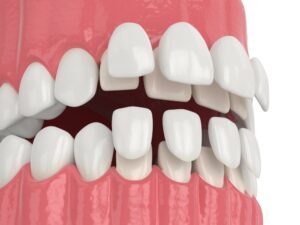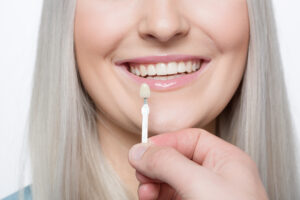Gum recession is a disorder that worries many people. It occurs mainly in adulthood, affects oral aesthetics, and reduces the functioning of the teeth. In today’s article, we will talk in detail about the causes of receding gums, and the treatments to remedy it (both at home and medical). And since one of the most important things in terms of health is prevention, at the end, we will give you tips to avoid it.
What are receding gums
Receding gums ranks approximately third among gum disorders. It is preceded only by gingivitis (which ranks first with 50% of cases), and by periodontitis or periodontal disease. So it is not surprising that people often wonder what receding gums are and what are the means to cure or prevent them.
Receding gums can also be called gum recession, and this helps us better understand what the problem is. Recession means ‘action and effect of withdrawing or going backward’. In other words, gum recession is defined as a pathological setback or wear on the gums, so that the teeth are more exposed than normal.
By trying to understand the function of the gums, we can better understand the seriousness of receding gums. The gum is that pinkish tissue, almost always very smooth and moist, that surrounds the teeth in the part where they are anchored to the jaws. Its function is to give protection and support to the teeth at the same time. And that protection to the teeth has a lot to do with keeping them wrapped in their lower area.
If the gums recede, that is, if they recede, then the disorder called receding gums occurs, which leaves the teeth exposed, unprotected, and with less support. This, in addition to being a disorder in itself, is the cause that can lead to other dental and gingival disorders that we will now see.
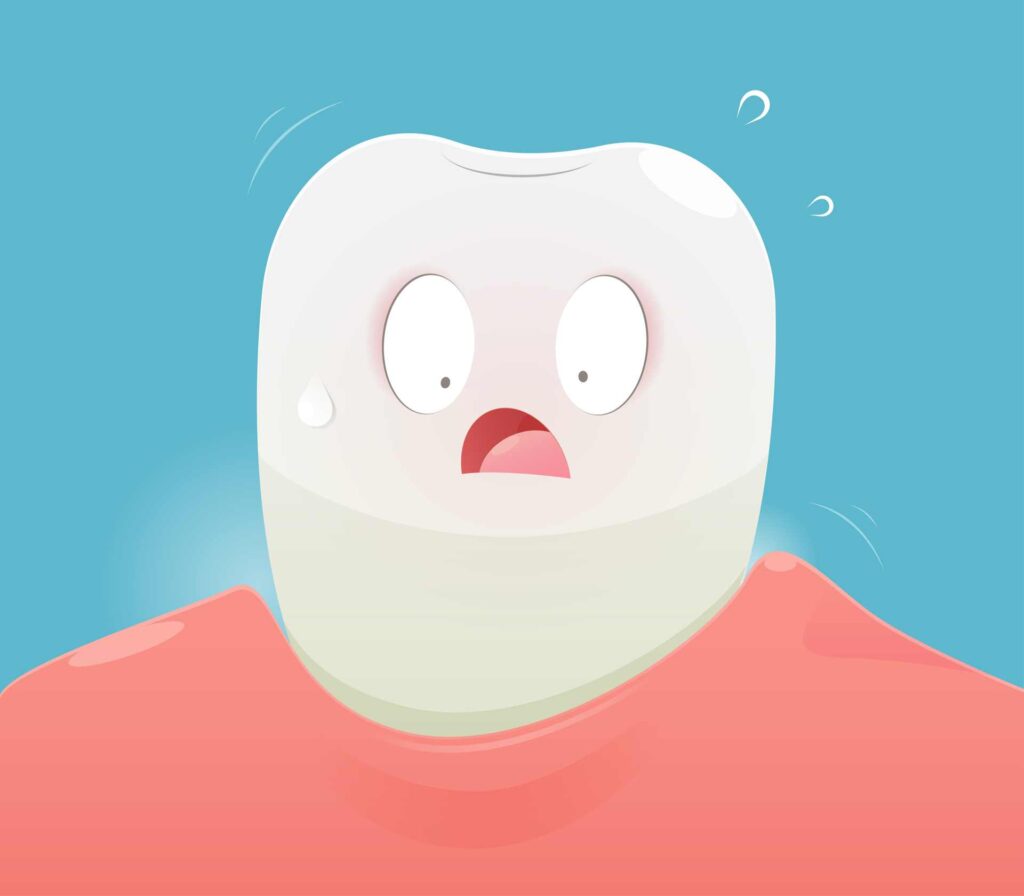
Consequences of receding gums
Gum retraction has consequences on the health and aesthetics of the teeth. For example, receding gums can lead to:
- Dental sensitivity: The teeth on their surface do not have nerve endings, so they are not really sensitive. Tooth sensitivity is an unpleasant experience and is a symptom of other disorders.
- Root cavities: The fact that the teeth are more exposed due to the retraction of the gums, increases the risk of cavities in the root of the teeth.
- Tooth loss: As we have said, the gums play a fundamental role in supporting the teeth. Any involvement of the gums can lead in one way or another to tooth loss. This will first manifest itself in lost teeth.
- Aesthetic affectation: When there is gum retraction, the teeth tend to appear longer, and this affects the aesthetics of the mouth and face, including self-perception. There is also a color difference in the part of the tooth that has just been exposed, compared to the crown that has always been exposed.
- Bleeding of the gums: The retraction of the gums implies such sensitivity in that tissue, that sometimes some bleeding can occur. For example, when biting into relatively hard food or when brushing teeth.
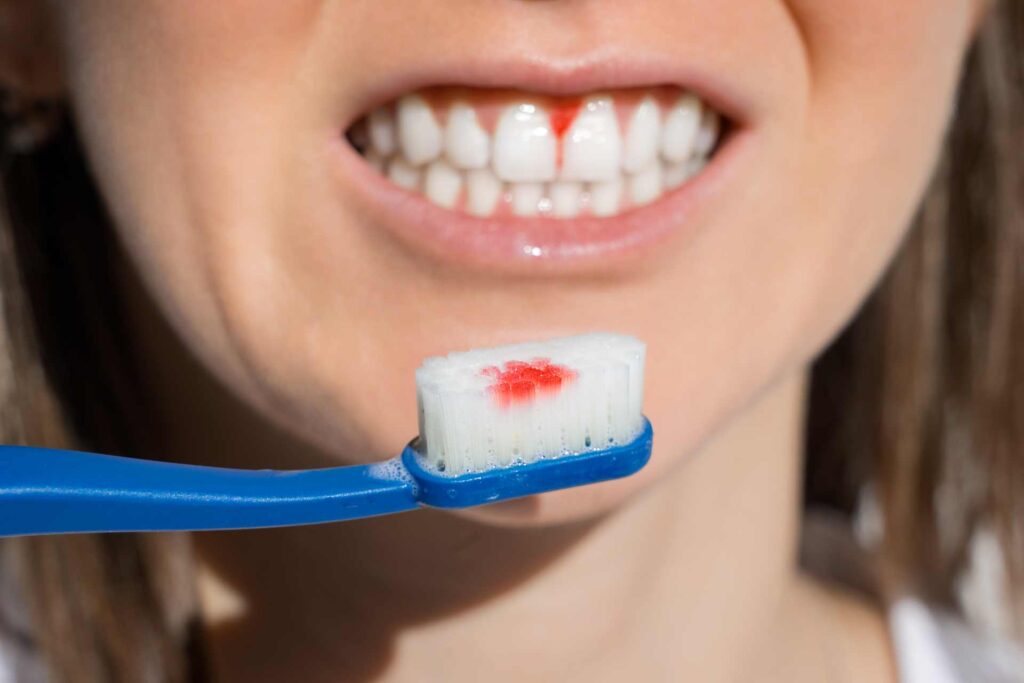
Something that many people also wonder is: Does receding gums hurt? Well, that depends. It depends on whether the disorder has progressed and become severe. If so, it does hurt, because it will be associated with dental plaque, infection, pus, bleeding gums, and tooth sensitivity. As we said, teeth are insensitive by nature, so any sensitivity they do have is unpleasant and sometimes painful.
Causes of receding gums
Knowing the causes of receding gums is extremely important to remedy it, or even to avoid it. As you can see, many of the causes that we will see below are quite daily. So keeping the following list in mind will help keep you out of the danger of receding gums, although there are some relatively unavoidable causes.
Genetic causes of receding gums
Research shows that up to 30% of the population is genetically predisposed to gum problems (including receding gums), regardless of how well you take care of your teeth. This means that for some people it is inevitable to suffer from a gum disorder.
Brushing teeth too hard
One of the causes of receding gums is brushing your teeth too hard. Contrary to what some may assume, it is the use of traditional brushes and not electric brushes that cause this problem (although this, of course, will depend a lot on the quality or brand of the brush).
Manual brushing too hard, for too long, or with bristle brushes that are too strong, can damage tooth enamel and lead to receding gums. To avoid these things, it is recommended to use brushes that have soft or suitable bristles, brush with less force, and only do it for the required amount of time. The brush design is also important. For example, bristles with a tapered or angled design are slightly more effective at reducing plaque than traditional flat brushes.
Using a suitable electric brush may be the solution for some people, especially if it is a brush that includes commands to take into account the correct brushing time or pressure. You can see more details on the subject in this Consumer Reports article .

Proliferation of bacteria between teeth and gums
One of the most well-known causes of dental problems of any kind is not brushing your teeth, or not brushing them often enough. The frequency of brushing teeth recommended by specialists is currently different from the traditional one.
While we’ve always been told that it’s a good idea to brush your teeth after every meal, an article on the Mayo Clinic website says: “The American Dental Association recommends brushing your teeth twice a day with fluoride toothpaste for 2 minutes at a time.”
However, it’s not just about brushing your teeth. You also have to brush them well, since brushing your teeth badly can cause problems. Most people tend to place the toothbrush with the bristles at a 90-degree angle to the teeth and gums, and brush only the teeth.
The truth is that the correct angle is 45 degrees, and you should always brush below the gum line. This brushing technique will also clean the space between teeth and gums, which prevents oral disorders, including gum retraction.
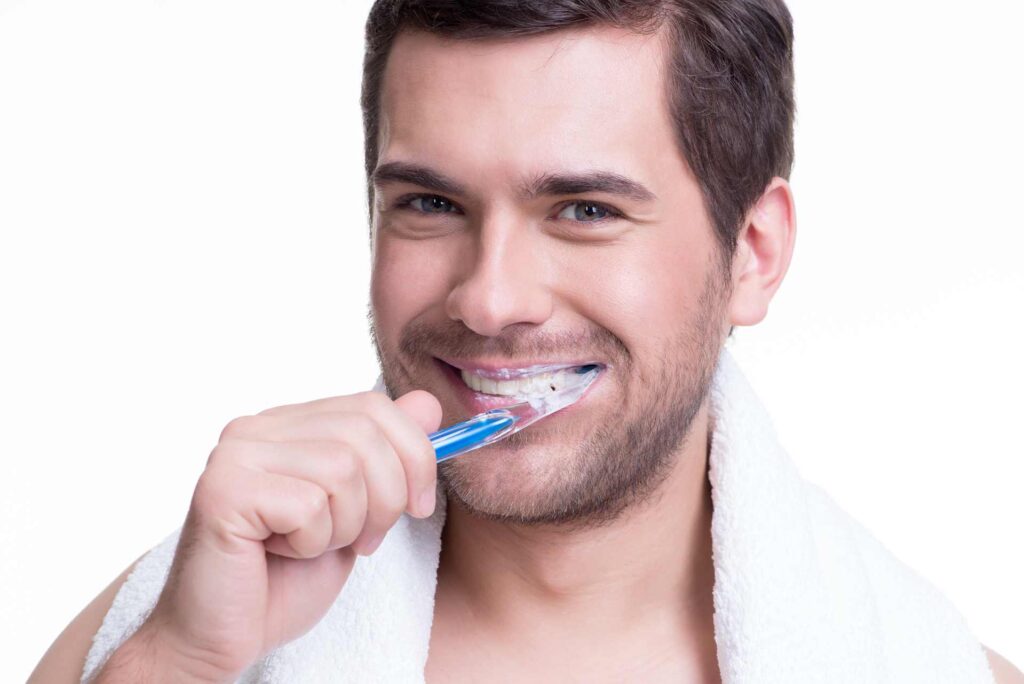
Another important thing, which even today is not so widespread among the population, is the use of dental floss and mouthwash. Every day more dentists and specialists recommend combining normal tooth brushing with frequent, even daily, use of dental floss and mouthwashes.
Hormonal changes in women
As we know, the woman throughout her life goes through stages of important hormonal changes. Three of the most important stages of female hormonal changes are puberty, pregnancy, and menopause. At any of these times, the gums are more sensitive and more vulnerable to conditions, such as receding gums.
Improper food and practices
Smoking creates sticky plaque on your teeth that is difficult to remove and can cause receding gums. Also foods with excess sugar damage teeth and gums. In addition, bruxism (the practice of clenching or grinding the teeth) causes the gums to separate from the teeth by mechanical action.
On the other hand, when a person’s teeth are crooked or misaligned and cause an out-of-place bite, this can lead to receding gums over time. A practice that can also affect the gums and cause them to recede is to pierce the lips or tongue to place piercings. The effect of metal friction causes wear and separation of the gums.

Wrong Orthodontic Practices
Orthodontics is a dental specialty that consists of correcting teeth and related bones that are in incorrect positions. For this, practices such as leveling, alignment, bite correction, interdental space reduction, etc. are used, which is often done by placing devices on the teeth and gums.
Orthodontic practices, if carried out by specialized personnel, do not have to be wrong. But in cases of bad orthodontic practices, one of the possible consequences is receding gums. A study from Tel-Aviv University, Israel, published in PubMed, talks about this issue.
Treatment for receding gums
Wondering what receding gums is is nothing compared to what really matters: What to do when your gums recede? In these cases, there are various treatments, both home and medical, which can be used.
Natural remedies for receding gums
Natural remedies, rather than remedies, can be considered mostly prophylactic. However, some can help reduce the effects of receding gums when it is already occurring. These are plants consumed in maceration format, teas, or essential oils. For example:
- Green tea: The anti-inflammatory and antioxidant properties of green tea are known. There is green tea in an industrial format, but the one that really has the best effects is organic or bulk green tea. It is recommended to consume an infusion of this green tea up to 2 times a day.
- Aloe vera: Aloe vera gel is a famous natural anti-inflammatory. It can be applied directly to receding gums with good results. There are aloe vera gels that are sold already prepared, but it is very effective to take a leaf from the plant, open it and apply the gel to the gums.
- Sage: Another plant that is useful in cases of receding gums is sage. The main application consists of chewing the leaves, although you can also gargle with an infusion of the leaves. Sage has been used for these purposes since time immemorial.
- Coconut oil: A gum massage can be done with a combination of coconut oil and sea salt. Coconut oil has known anti-inflammatory and antibacterial properties.
- Lemon oil: You can massage the gums with the oil obtained from the lemon peel, or mix it with warm water and gargle. Lemon oil has antiseptic and antibacterial properties.
- Consume vitamin C: Vitamin C has positive effects against receding gums. It can be taken in supplements, but it is even better to consume it directly in raw fruits that are rich in it.

Gum retraction: surgery
Dentists treat receding gums by a variety of methods, including thorough cleaning of the affected area, dental scaling, and careful removal of plaque and tartar buildup on the teeth and root surfaces below the gum line. Another common practice is the administration of antibiotics.
However, one of the most effective medical procedures to cure receding gums is surgery. It is important to smooth the exposed root area as this makes it difficult for bacteria to enter. Root planing, along with open flap scaling, are two of the surgical procedures used to treat receding gums. The other surgical procedure is the regeneration of damaged gingival tissue.
When gum recession is due to poor brushing technique (excessive pressure, excessive time, wrong angle, etc.), the first thing is to correct brushing errors. Doctors can then proceed to place a graft of gum tissue, with the aim of covering the affected tooth root(s). This is very effective. After the treatment, the gums will look like they always have.
The tissues to replace or regenerate damaged gums can be membranes, graft tissues or tissue growth-stimulating proteins. The tissues can also be taken from the patient’s own body, to reduce any type of reaction risk. A study published by the National Library of Medicine has demonstrated the therapeutic efficacy of autologous connective tissue transplants with periosteum and platelet-rich plasma in the management of receding gums .
Prophylaxis: How to avoid receding gums
- An important step in preventing receding gums is for people who smoke to quit. After all, receding gums is just one of many problems that result from the consumption of tobacco or cigarettes. For this reason alone it is worth giving up smoking.
- You have to brush your teeth correctly, at an angle of 45 degrees and not at an angle of 90 degrees. It is also advisable not to exert too much pressure during brushing, nor do it for more than 2 minutes. Use dental floss and mouthwashes.
- It is good to visit the dentist 2 times a year, to carry out a careful review and detect any gum disorder in time. If you have crooked teeth, the orthodontist will help you correct them, so that the crooked bite does not cause gum retraction.
